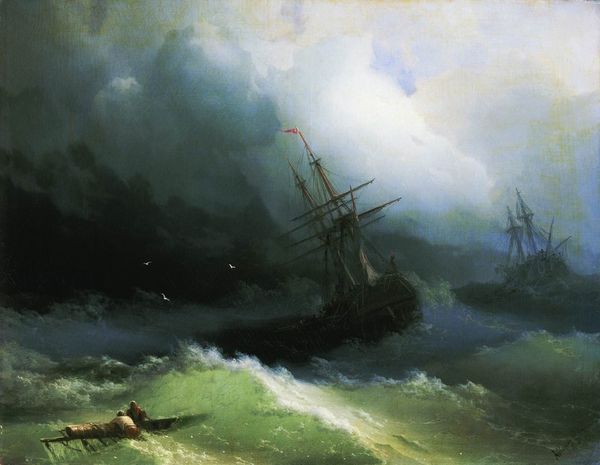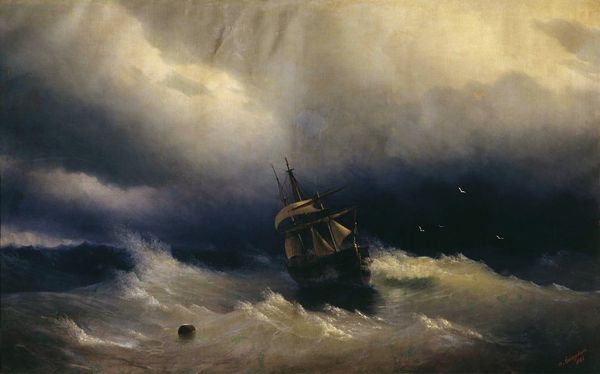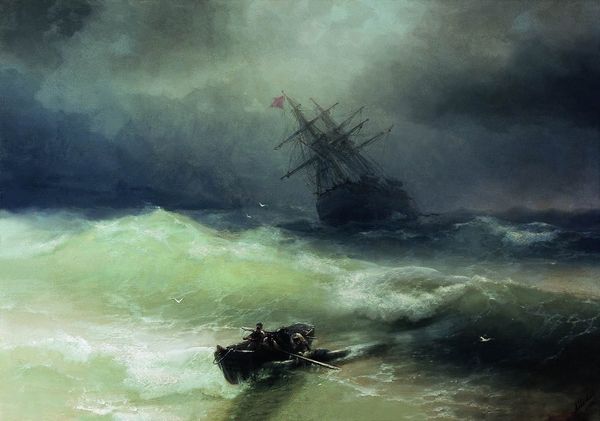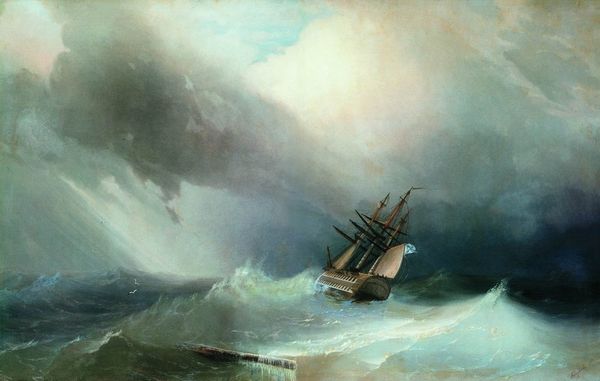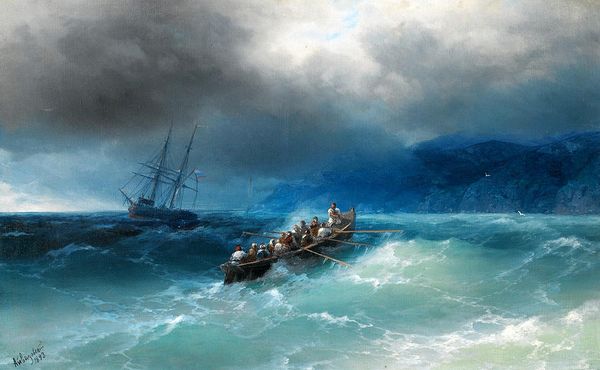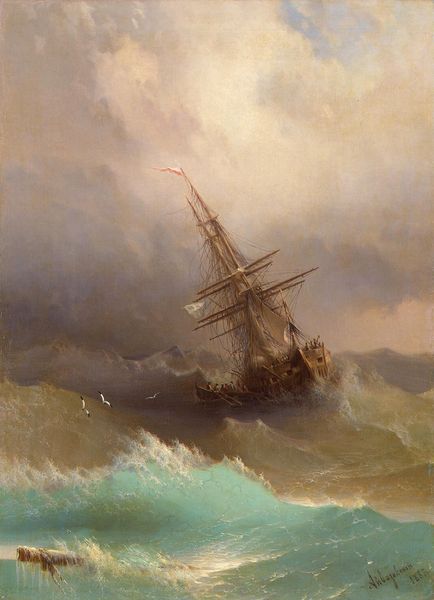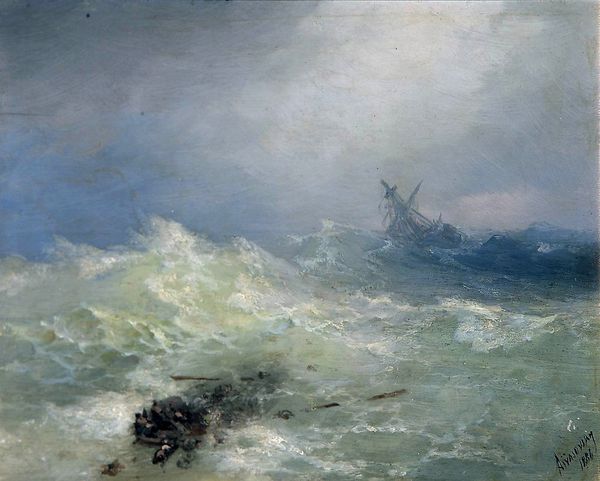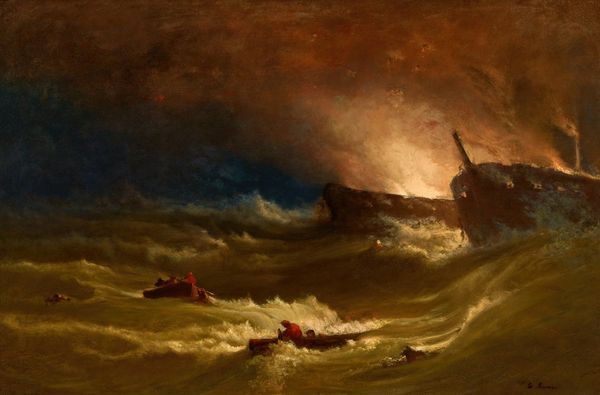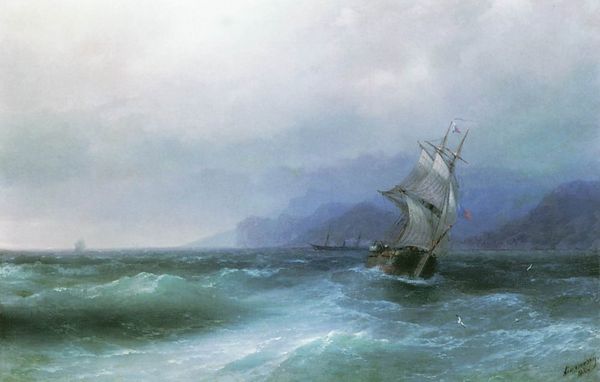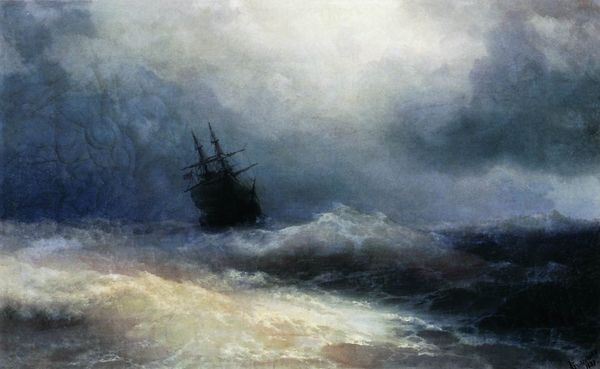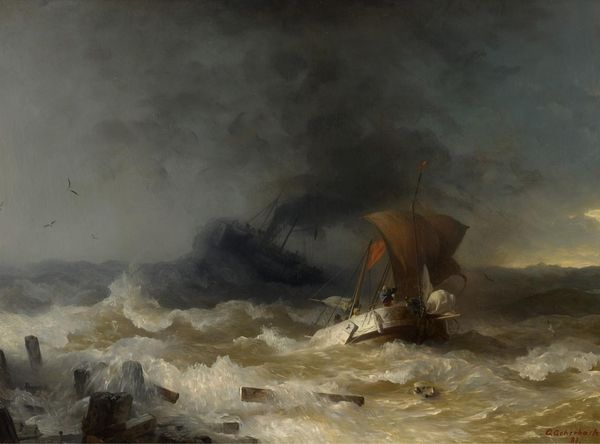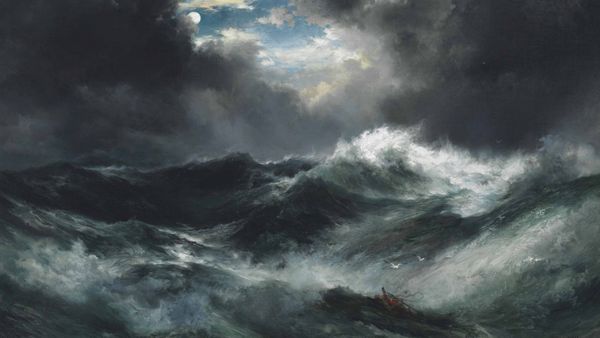
Copyright: Public domain
Curator: Aivazovsky's "Ships in a Storm," painted in 1860, plunges us right into the heart of a maritime maelstrom. The Romantic style really makes its presence known, doesn't it? Editor: It absolutely does. I'm immediately struck by the raw, almost violent energy. The sheer power of the waves dominates the canvas, dwarfing the ships struggling against them. The luminosity cutting through the darkness, a very deliberate light, guides the eye. Curator: Aivazovsky, we know, was deeply invested in the materiality of paint and the techniques he employed. He famously never painted from direct observation, rather relying on memory and imagination. How does understanding the means of production influence our appreciation? For instance, considering his control over glazing to create those stunning translucent effects in the water? Editor: It undeniably showcases an exceptional grasp of light and color theory, pushing the boundaries of how oil paint could replicate the movement of water and light in a stormy setting. Note how the texture, achieved through layering and brushwork, lends such weight and movement to the clouds and waves, mimicking real meteorological events and affecting the narrative’s arc. Curator: I am interested in how we grapple with what the workers, likely anonymous, building and crewing those vessels might feel looking at such a portrait of capitalist enterprise. Think of the historical context: This was a time of rapid industrialization and expanding global trade networks. A work like this reflects humanity’s attempts to master the very forces that ultimately expose our vulnerability. Editor: Certainly. And considering the symbolic heft, Aivazovsky doesn’t just depict a storm; he portrays a test of human resolve against a majestic and indifferent nature, where dramatic light is the ultimate actor in the scene. The sky threatens, but there is always a light finding purchase on the subject of struggle, this duality providing a narrative resolution, of sorts. Curator: He elevates, with his materials and labor, a single fraught incident on a turbulent sea into something monumental. So perhaps by acknowledging the work and the world behind these canvases, we humanize them. Editor: I think that perspective grants even greater insight, making us not only see but truly feel the drama. Thanks to you, I was prompted to inspect more closely.
Comments
No comments
Be the first to comment and join the conversation on the ultimate creative platform.
